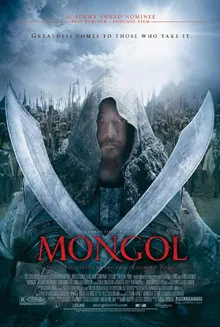Historical accuracy of Mongol

Historical accuracy of Mongol

Characters
Temüjin
Portrays his documented early life hardships (father's death, abandonment, enslavement). Aims to humanize him but omits key events like killing Bekter. Some events (Tangut slavery) are fictionalized.
Börte
Her importance, arranged marriage, and abduction by Merkits are historical. Her active role in rescuing Temüjin from Tangut prison is a major fictional addition.
Jamukha
The Anda relationship and later rivalry leading to war are historical. Specific dialogues, motivations, and the film's portrayal of his final fate differ from some accounts.
Yesügei
His role as chieftain and his poisoning by Tatars, which sets the plot in motion, aligns with historical accounts like The Secret History of the Mongols.
Höelun
Portrayed as a resilient figure leading her family after Yesügei's death, consistent with her depiction in historical sources.
Targutai
His role in abandoning Temüjin's family and later enslaving him is historical. The specific depiction of refusing to kill a child due to custom might be dramatized.
More characters
Toghrul Khan
His complex relationship with Temüjin, shifting from ally (helping rescue Börte) to rival, reflects historical accounts, though details are condensed.
Chiledu
Appears briefly during the arrangement of Börte's marriage to Temüjin, consistent with historical accounts.
Bekter
His existence and rivalry with Temüjin are historical, but the film omits the significant event of Temüjin killing him as a youth.
Tangut Monk
Represents the fictional Tangut enslavement period; Temüjin's historical relationship with the Tangut kingdom came much later as a conqueror.
Story
Temüjin chooses Börte as a child
The arrangement of the marriage, with young Temüjin selecting Börte, is described in The Secret History of the Mongols.
Yesügei poisoned by Tatars
This event, leading to the family's vulnerability, is a key historical point from Temüjin's early life.
Temüjin's family abandoned by their clan
Following Yesügei's death, their clan deserted them, leaving Höelun and her children to fend for themselves, as recorded historically.
Temüjin enslaved by Tayichiud clan
His capture, enslavement (wearing a cangue/wooden collar), and eventual escape from the Tayichiud under Targutai are documented events.
Killing of half-brother Bekter
The film omits the historically significant event where young Temüjin and his brother Khasar killed their half-brother Bekter over a dispute, a crucial episode in The Secret History.
Börte kidnapped by Merkits
Börte's abduction by the rival Merkit tribe is a major historical event that spurred Temüjin to seek alliances. (Note: Some film summaries incorrectly state Tatars).
Rescue of Börte with Jamukha/Toghrul's help
Temüjin successfully sought aid from his Anda Jamukha and his father's Anda Toghrul Khan to rescue Börte.
Split and rivalry with Jamukha
The breakdown of the friendship and the divergence of their paths, leading to conflict between their followers, is historically accurate.
Temüjin enslaved by Tanguts
This significant portion of the film, including Börte's elaborate rescue, is fictional. Temüjin's interactions with the Tangut state occurred much later in his life during his campaigns of conquest.
Battle between Temüjin and Jamukha depicted
The film depicts a major battle reflecting their rivalry (akin to the Battle of Dalan Baljut/Thirteen Sides). However, specific tactics shown (e.g., "red sash" warriors) and outcomes are likely fictionalized.
Alliance and betrayal by Toghrul Khan
The complex dynamic where Toghrul first aided Temüjin then later turned against him is consistent with historical accounts.
Question of Jochi's paternity
The film acknowledges the doubt surrounding the paternity of Börte's first son, Jochi, born after her captivity, which was a real historical issue.
Setting
12th Century Mongolian Steppe landscape
The cinematography effectively captures the vast, harsh, and beautiful environments of Central Asia, crucial to understanding the Mongol nomadic context.
Nomadic lifestyle elements
Portrayal of gers (yurts), reliance on horses, herding practices, and constant movement reflects the core realities of Mongol pastoral nomadism.
Tribal politics and warfare
Shows the constant shifting alliances, betrayals, and warfare between clans. Battle scenes feature impressive visuals but sometimes employ questionable or fictionalized tactics.
Costumes and appearance
Features traditional Mongolian robes (deels). Criticized for some inaccuracies like certain helmet types and the use of straight swords instead of curved ones.
Languages used
Uses Mongolian dialects, which adds authenticity. The use of Mandarin for the Tanguts is inaccurate (due to Tangut being extinct and production constraints).
Shamanistic beliefs (Tengri)
Incorporates the importance of Tengri (the Sky God) and shamanistic elements in Mongol spiritual life, influencing characters' motivations and interpretations of events.
Depiction of hardship and brutality
Effectively conveys the precariousness of life, the prevalence of violence, slavery, and the challenging environmental conditions of the steppes.
